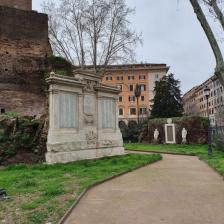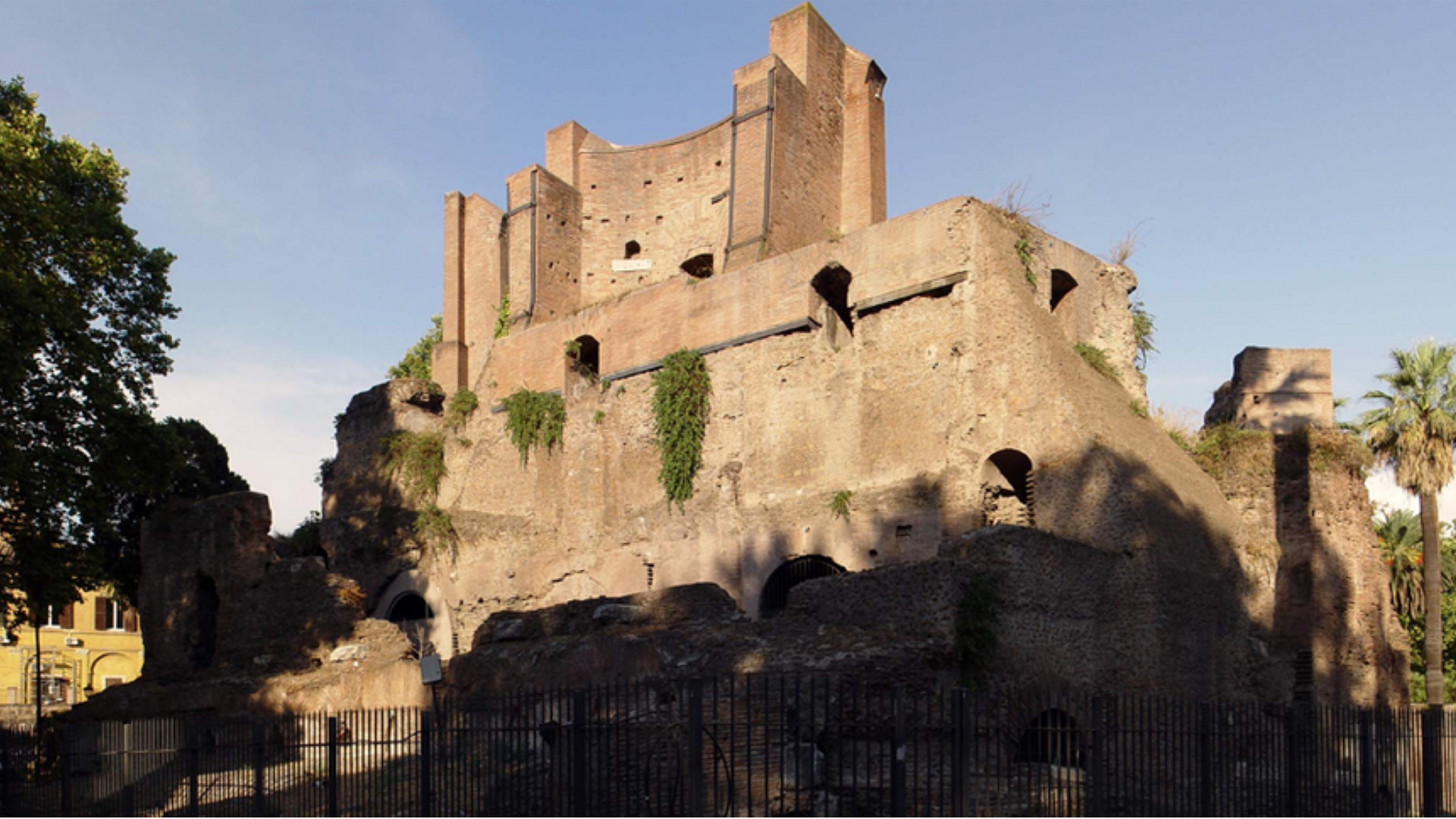
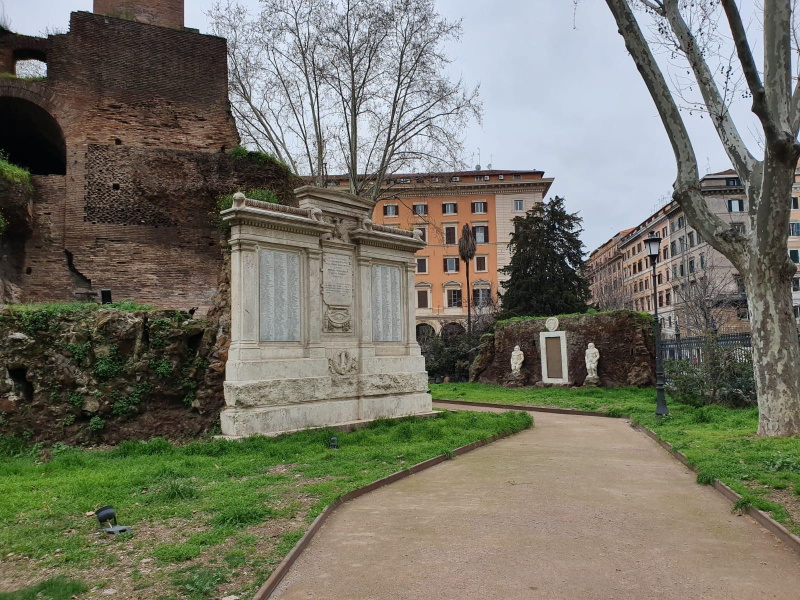
In the gardens of Piazza Vittorio Emanuele II, next to the Magic Door - entrance to the disappeared Villa Palombara - there are the remains of the imposing Nymphaeum of Alexander Severus, a brick structure built by the emperor in 226 AD.
The building, the only survived of the 15 Roman monumental nymphaeums, originally stood at the intersection of via Labicana and via Tiburtina, on the highest point of the Esquiline Hill. It was a majestic fountain, fed by the branch of an aqueduct identifiable only with the Acqua Claudia, Acqua Giulia or Anio Novus, with the function of a castle for distributing water to the lower areas of the city.
Since the Middle Ages, the building has been known as "The Trophies of Marius" due to the two marble trophies erroneously attributed to the victories of Caius Marius.The sculptures decorated the monument until Pope Sixtus V disposed their transfer to the balustrade of the Cordonata, the stairs to Piazza del Campidoglio in 1590. According to some sources, the sculptures refer to Domitian's victorious campaigns over the Catti and Dacians in 89 AD.
The fountain was scenically developed on three levels with various rooms and outlets, still visible today. It was full of basins, niches, statues, and sculptural groups and entirely covered with marble slabs. The third floor featured a facade with a large central niche flanked by two open arches. A basin collected the water that came down from above and conveyed it to the lower floors from where it was distributed. An attic, decorated with some statues and a quadriga, crowned the whole.
Vittorio Emanuele II Square
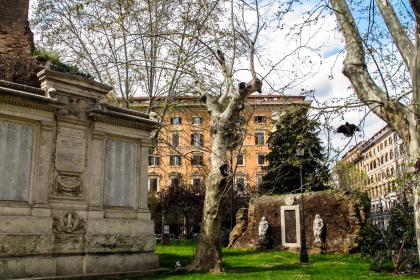
 Condividi
Condividi
The heart of the multi-ethnic Esquilino district
The Magic Door
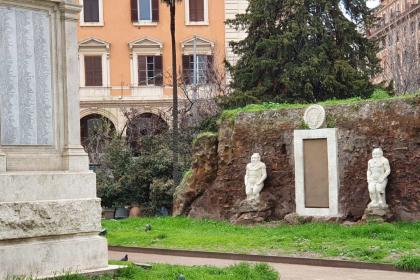
 Condividi
Condividi
Giardini Nicola Calipari di Piazza Vittorio
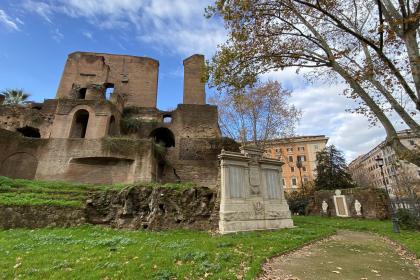
 Condividi
Condividi
Information
Open from September 1st to organized groups by reservation only. Max 10 visitors.
Open to single visitors without guided tour on Wednesday 8 December.
Reservation required at 060608
 Condividi
Condividi
Location
To find out about all accessibility services, visit the Rome accessible section.












































